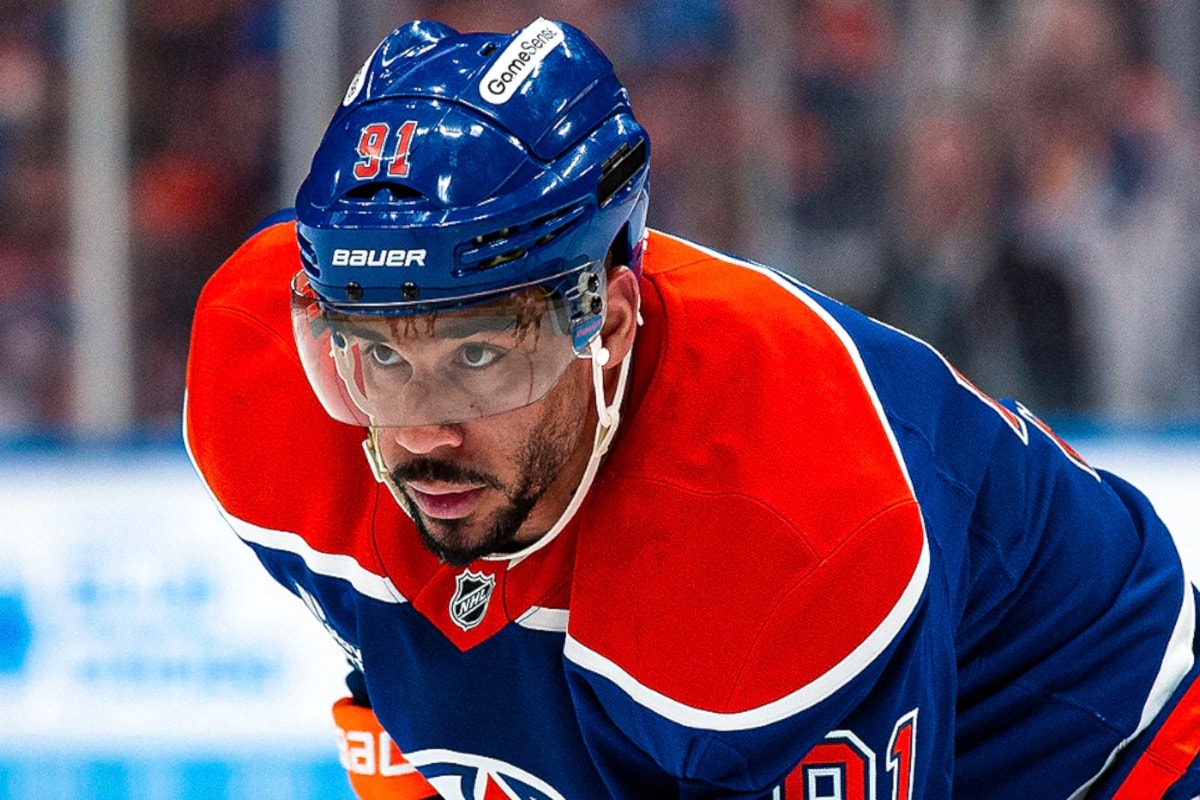Evander Kane’s Trade from Oilers to Canucks Sparks Controversy, Roster Shifts, and Fan Reactions Across the NHL
The NHL offseason is never short of drama, but few moves have generated as much buzz as Evander Kane’s recent trade from the Edmonton Oilers to the Vancouver Canucks. The deal, which came together after weeks of speculation, has sent shockwaves through the league, stirring debates about locker room dynamics, on-ice performance, and the broader implications for both franchises. While trades are a routine part of hockey operations, Kane’s move carries extra weight due to his polarizing reputation, his recent resurgence in Edmonton, and the fierce rivalry between the Oilers and Canucks.
Kane’s tenure with the Oilers was a rollercoaster. After signing a four-year, $20.5 million deal in 2022 following a tumultuous exit from the San Jose Sharks, the veteran winger was seen as a high-risk, high-reward acquisition. His physical style of play and scoring touch made him a valuable asset alongside Connor McDavid and Leon Draisaitl, but his off-ice controversies—including allegations of gambling, contract disputes, and locker room friction—never fully faded. Despite this, Kane delivered on the ice, posting 22 goals and 17 assists in 77 games last season while bringing a much-needed edge to Edmonton’s top six.
So why trade him now? For the Oilers, the decision appears to be a mix of cap management and changing team chemistry. With limited financial flexibility and key players like Evan Bouchard and Ryan Nugent-Hopkins due for extensions, moving Kane’s $5.125 million cap hit provides crucial breathing room. Additionally, reports suggest that while Kane was productive, his relationship with certain teammates and coaching staff had grown strained. The Oilers, desperate to finally break through in the playoffs, may have decided that his presence was no longer worth the potential distractions.
On the other side, the Canucks’ motivation is equally intriguing. Vancouver has been aggressive this offseason, looking to build on last year’s surprising playoff push. Kane brings a blend of toughness and scoring that the Canucks lacked, particularly in their middle six. But his acquisition is not without risk. Vancouver’s locker room, carefully cultivated by head coach Rick Tocchet and captain Quinn Hughes, is known for its tight-knit culture. Inserting a player with Kane’s history could either galvanize the group or disrupt its balance.
Fan reactions have been predictably divided. Oilers supporters are split between those who believe Kane’s departure weakens their Stanley Cup aspirations and those who feel the team is better off without the drama. Canucks fans, meanwhile, are cautiously optimistic. Some see Kane as the missing piece to deepen their playoff run, while others worry about his potential to derail team chemistry. Social media has been ablaze with debates, memes, and hot takes, proving once again that few players polarize like Evander Kane.
The trade also reignites the long-standing rivalry between Edmonton and Vancouver. The two Pacific Division foes have clashed for decades, but this move adds a personal edge. Kane, known for his physical and sometimes antagonistic play, has had his share of battles with the Canucks over the years. Now, wearing their colors, he’ll face his former team multiple times next season—a storyline that guarantees fireworks.
Beyond the immediate roster implications, Kane’s trade raises broader questions about player value in the modern NHL. Teams increasingly weigh intangibles like leadership and locker room fit alongside traditional metrics like goals and hits. Kane’s talent is undeniable, but his baggage has made him a perennial gamble. If he thrives in Vancouver, it could reinforce the idea that fresh starts can revive careers. If he falters, it may further cement his reputation as a player whose upside comes with too many caveats.
As the dust settles, one thing is clear: Evander Kane’s move to the Canucks is more than just a transaction. It’s a storyline that will unfold over the entire season, influencing playoff races, locker room dynamics, and perhaps even the future of both franchises involved. Whether this trade becomes a masterstroke or a misstep remains to be seen, but for now, it’s the talk of the hockey world.



